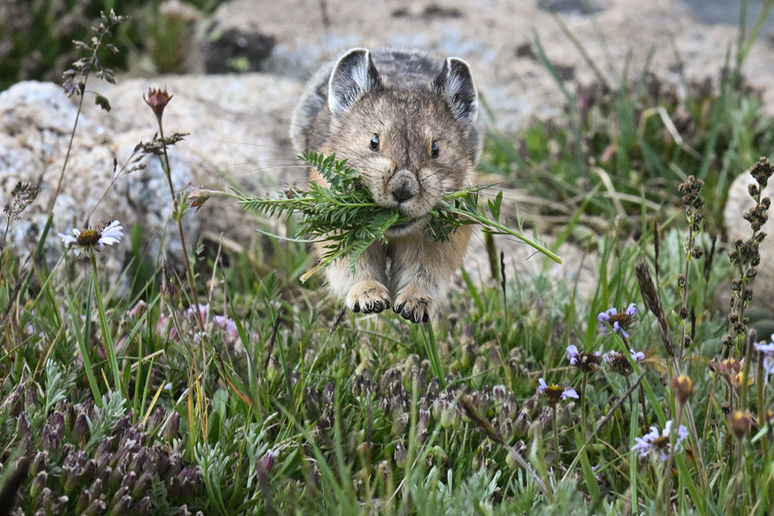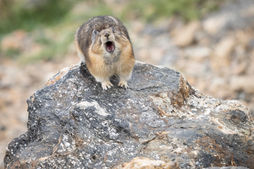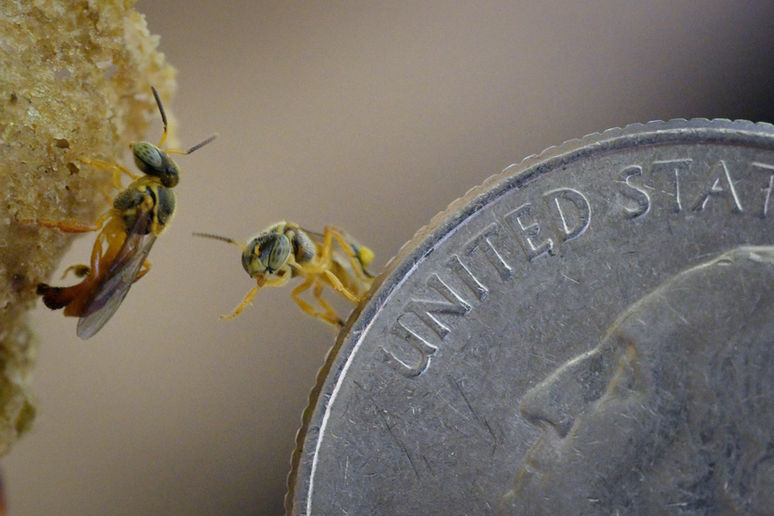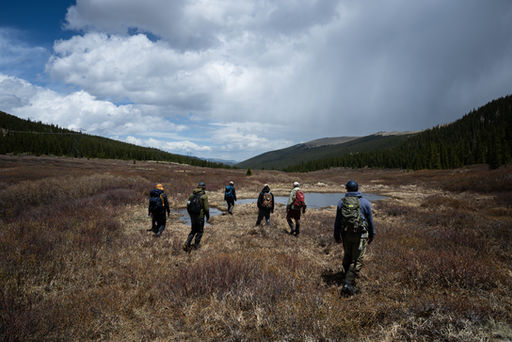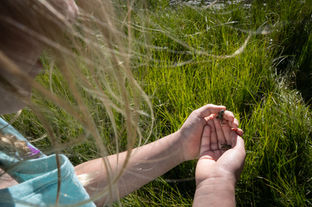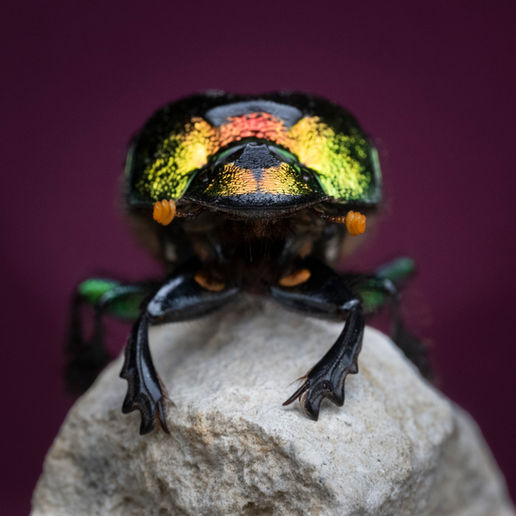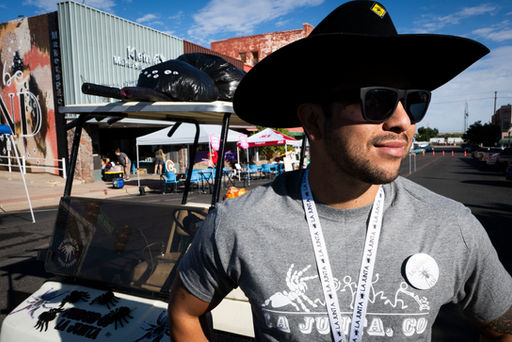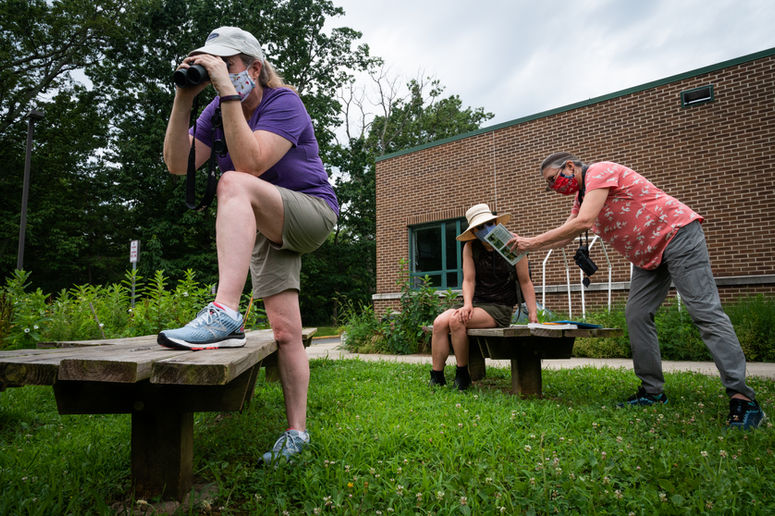
Photos
PORTFOLIO
CONSERVATION STORIES
PIKA PATROL
This adorable rabbit relative sounds an alarm for global warming.
In the high-altitude landscapes of Colorado, the American pika—small, furry, and often overlooked—has become a critical symbol of the effects of climate change. Adapted to thrive in cold, rocky habitats, these little animals are increasingly threatened by rising temperatures and diminishing snowpack, which disrupt their delicate survival balance. As vital members of the alpine ecosystem, pikas play an essential role in maintaining the environment, yet they now serve as an early warning for the region's shifting climate. To protect them, dedicated community scientists —known as the Pika Patrol—hike to some of the highest elevations in the Rockies, sometimes even reaching 14,000 feet, to collect crucial data and monitor pika populations. Their efforts are vital in understanding how these tiny creatures are responding to environmental changes and in advocating for the preservation of their habitats. This story was published online by National Geographic, I was deeply honored when one of the images from this project was awarded as one of the best animal photos of 2022 by National Geographic, a recognition that underscores the urgent need to protect species like the pika that are signaling the changing world around us.
Read this story on National Geographic here: This adorable rabbit relative sounds an alarm for global warming
NATIVE BEES: A STORY OF HOPE FOR THE AMAZON
Hope can be found in the Smallest of Places For these Indigenous Amazonian Villages it may be seen in the Tiniest of Bees
In this project, I had the incredible opportunity to venture deep into the Bolivian Amazon with a leading native bee biologist to document a story of hope and resilience. I followed professor Professor Oscar Javier Amaya (Rupa) to Indigenous communities where he taught them how to sustainably harvest the honey from native stingless bees—vital pollinators that play an essential role in the restoration of the Amazon’s fragile ecosystem. The forest has been devastated by fire, logging, mining, and agricultural expansion, but these bees are helping to restore balance with their pollination superskills. The bees, which help pollinate 70% of the native forests, offer not only a chance to protect the environment but also a pathway to economic sustainability through the sale of their medicinal honey for the indigenous communites. This project is a celebration resilience and a reminder that even in the smallest of creatures, there is immense power to heal and protect.
To learn more visit: Bees | Rewilding Bolivia
BOREAL TOADS
A Collaborative Quest to Save an Endangered Toad from Extinction
The Boreal Toad is a true testament to the power of collaboration and determination. As one of Colorado's most unique and threatened species, this high-altitude amphibian once thrived in the rugged mountain habitats of the Rockies, but today, its population has plummeted to critically low numbers. I had the privilege of capturing images of these incredible toads and the dedicated efforts being made to ensure their survival. Often, conservation stories focus on a single champion, but the story of the Boreal Toad is different—it's about a community of champions, including zoos, state agencies, and community scientists, all working together to protect this rare species. From community scientists checking for deseases, to preserving their habitat and breeding them in captivity, each step in the toad’s recovery is a testament to the power of teamwork and innovation. With this story I aim to share the importance of these collaborative efforts, celebrating both the toad's resilience and the passionate people fighting for its survival.
COLORADO PRAIRIE LANDS
A story about climate change, bison, poop, and rainbow dung beetles
TEXT WILL GO HERE
TARANTULA MIGRATION
A Small Town's Celebration of Tarantulas
As a photographer, I had the unique opportunity to photograph La Junta, Colorado, during its Annual Tarantula Fest. I met Mayor Joseph Ayala, who proudly shared his vision for the town: “We want this to be the Tarantula Capital of the World.” With a giant smile, he stood in front of his golf cart, decorated with plastic tarantulas, just moments before the festivities began. He explained, “People thought it was a migration, but really, they’re just in search of love. So we’re calling it the Love Trek, Respect the Trek.”
Locals and enthusiasts from all over gathered to celebrate the tarantula migration with a parade, a showing of the 1930s film Tarantula, face painting, 8-legged relays, hairy leg competitions, and bus tours to see the tarantulas in their natural habitat. It was incredible to witness how this small town embraces its unique natural event, with people pulling over on the highway by the hundreds in search of these fascinating creatures, all while honoring the incredible "love trek" of the tarantulas.
GUARDIANS OF THE INSECT KINGDOM
A story about bug counters
I had the opportunity to document a dedicated group of senior citizens in Northern Virginia who in 2020, despite the risks of COVID-19, continue to gather twice a week to survey local wildlife. For 26 years, they’ve been tracking birds, dragonflies, butterflies, and native plants, and their data has become crucial to scientists, especially with field research delayed by the pandemic. In my story for National Geographic, I highlighted how their contributions support vital research, underscoring the importance of community science during such challenging times. Insect populations worldwide face significant challenges from land use, pesticide use, and climate change. Insects play a crucial role in pollination and maintaining local biodiversity, and the data these citizen scientists gather is essential to understanding and addressing the decline of these vital species. These volunteers, despite the risks, remain committed to their counts.
Click here to read the story in National Geographic: Americans are observing nature during the pandemic, helping scientists with research































